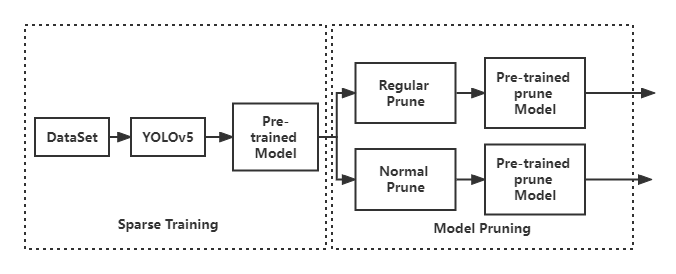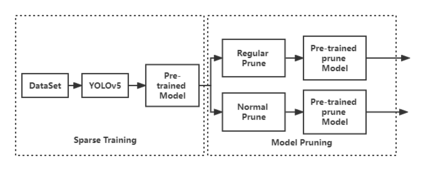One-stage algorithm have been widely used in target detection systems that need to be trained with massive data. Most of them perform well both in real-time and accuracy. However, due to their convolutional structure, they need more computing power and greater memory consumption. Hence, we applied pruning strategy to target detection networks to reduce the number of parameters and the size of model. To demonstrate the practicality of the pruning method, we select the YOLOv5 model for experiments and provide a data set of outdoor obstacles to show the effect of model. In this specific data set, in the best circumstances, the volume of the network model is reduced by 49.7% compared with the original model, and the reasoning time is reduced by 52.5%. Meanwhile, it also uses data processing methods to compensate for the drop in accuracy caused by pruning.
翻译:一个阶段算法被广泛用于需要大量数据培训的目标探测系统,其中多数在实时和准确性两方面都表现良好。 但是,由于它们的演变结构,它们需要更多的计算力和内存消耗量。 因此,我们应用了调整战略来瞄准探测网络,以减少参数的数量和模型的大小。为了证明运行方法的实用性,我们为实验选择了YOLOv5模型,并提供一组室外障碍数据,以显示模型的效果。在这个特定的数据集中,在最佳的情况下,网络模型的量比原始模型减少49.7%,推理时间减少52.5%。与此同时,它还使用数据处理方法来弥补运行的准确性下降。





